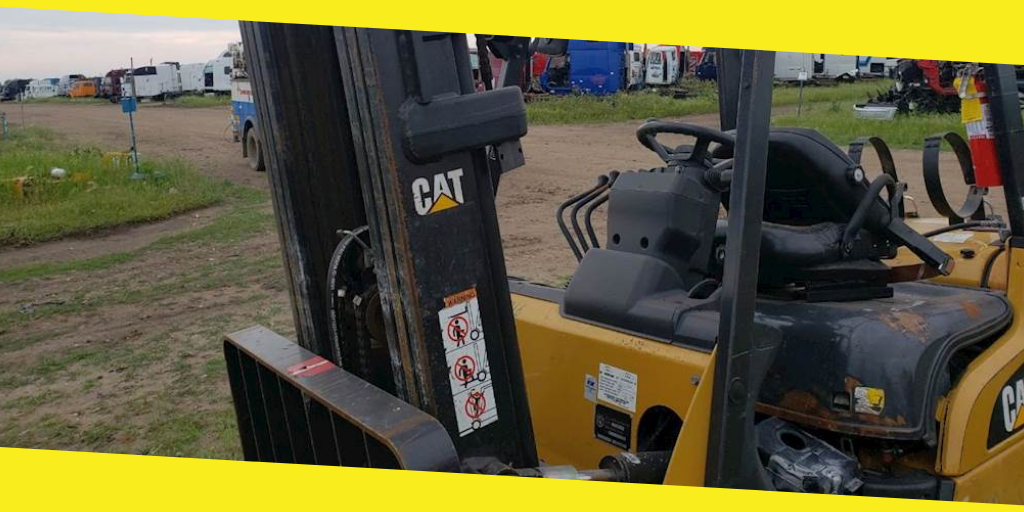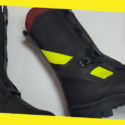4 Common Types of Forklift Mast

Forklifts are powered industrial trucks used in various industries and warehouse setting to lift and move goods over short distances. Every part of the forklift plays a crucial role in the overall functionality. One of the essential parts is “forklift mast.”
It is a system in a forklift that serves load lifting. It is also referred to as an ‘upright,’ the vertical portion on the front of the forklift that raises, lowers, and positions the loads manipulated by the forks. Other important attachments of the mast are carriage that works together to do the job well.
Each type of mast represents its own set of benefits for various applications depending on their height, weight, and stacking requirements.
Most forklift masts are straight that use hydraulic force for lifting and lowering loads. However, they are typically described as the two types of lift mechanisms:
1. Standard Forklift Mast
It is a two-stage assembly that uses two rails- stationary and movable inner rail. This type of mast consists of two side-mounted cylinders to give a lift to the inner rails, and the indirect chain lifts the fork and carriage assembly.
2. Free Lift
It describes the maximum height of the load lifted before the mast begins to extend. The potential of free lift is important if the lift truck lifts and maneuvers in areas where overhead space is restricted, like double-stacking in a trailer. A mast without free lift would extend upwards as the forks begin to lift. A full free lift mast enables the forks to elevate to the top of the inner section before it extends upward.
Each type varies in its features and capabilities. Here are four common types of forklift masts:
1. Single-Stage Upright
It has one channel that has a limited lifting height. These don’t allow full free lift, which as a result, the mast has to extend higher while stacking loads. This type of mast is ideal for low lift heights, automotive, walk-behind equipment, outdoor work where overhead clearance is not an issue.
However, regardless of what forklift type you use, the safety of employees should be the top priority. Each forklift operator must be trained and certified with forklift certification in the utmost safety of the work environment.
2. Duplex Upright or Two-Stage Mast
It has a two-stage assembly that can provide the full free lift with a center-mounted cylinder. The primary cylinder raises the carriage to the top of the inner rails, and hydraulic fluid gets redirected to the secondary cylinders to enable the direct rail lift.
Two-stage forklift masts are great for lifting heavy loads at low heights and works perfectly for:
- Double stacking
- Indoor work with a limited overhead clearance
- Trailers where visibility can be poor
3. Triplex or Three-Stage Mast
It is one of the most highly used masts, which is created explicitly for versatile forklifts. It offers higher lift capabilities that make it suitable for various warehouse jobs. This uses three rails to offer a three-stage with full free lift.
It has three sets of rails, two sliding rails and one is stationary. While the primary cylinder offers a full free lift, the secondary cylinder provides a lift to the inner rails. It is best for jobs where the forklift needs to reach above-average heights.
4. Quad or Four-Stage Mast
It has four sets of rails and two sets of chains to provide a higher reach of loads.
It provides a full free lift similar to the triplex. The difference here is it has an extra set of pulleys and chains that allow the fourth stage of the lift. It is best used for high stacking in exclusive warehousing. It can load and unload high-tiered stacks than two or three-stage masts.
The following list of forklift mast terminology will help you ensure all operators are prepared to use the lift truck safely and effectively!
Recommended For You
5 Ways to Grow Your Business in Only a Few Days
Most Inside
Most Inside offers high-quality recommendations and valuable updates to enhance all aspects of your life, providing premium guidance and enriching experiences.




